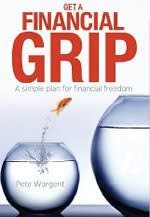The 10 major risks faced by Australian property investors

These are 10 of the traditionally pre-eminent guises of investment risk, but specifically as they apply to Australian property investors.
1 Market risk (or systematic risk)
Market risk may affect all investments in an asset class in a similar manner, such as in the event of a market-wide price crash. As such, market risk that cannot easily be mitigated through diversification. While buying properties in different states might diversify market risk to a partial extent, if the wider property market crashes, diversification is unlikely to assuage the systematic risk successfully.
Property investors should additionally invest in other asset classes that tend to move in a non-correlated manner to real estate. Property investors can also focus upon a longer investment time horizon which allows correcting markets greater opportunity to recover.
2 Liquidity risk
Equates to the possibility that an investor may be unable to buy or sell an investment when desired (or in sufficient quantities) due to limited opportunities.
Illiquidity is a salient risk in real estate. It is difficult to sell a property quickly should the need arise, which is not the case for large-cap stocks or government bonds. Liquidity risk in Australian property is best mitigated through investing in landlocked capital city suburbs with eminent demand and constrained supply.
3 Specific risk (or unsystematic/business risk)
Equities investors and fund managers talk much of specific or business risk, being the measure of risk associated with a particular stock or security. Also known as unsystematic risk, this typically refers to the risk associated with a specific issuer of a security. Businesses in the same industry may have similar types of business risk, and issuers of stocks or bonds may become insolvent or lack ability to pay the interest and principal in the case of bonds.
Specific risk in property investment is somewhat different, and rather relates to the risk of acquiring a loss-making property or one which delivers sub-optimal returns giving rise to opportunity cost. Specific risk can be mitigated through diversification, although this can represent a challenging proposition in property as dwellings tend to be expensive.
One frequently invoked strategy of property investors is to acquire different types of property in different states. Careful, detailed due diligence and research of any property purchase also tends to reduce (if not eliminate) specific risk.
4 Interest rate risk
Normally refers to the possibility that a fixed-rate debt instrument will decline in value as a result of a rise in interest rates. Where an investor buys a security offering a fixed rate of return, he introduces an exposure to interest rate risk. Examples thereof including bonds and preference shares (preferred stocks).
In Australian investment property, the interest rate risk instead lies in variable rate mortgages as the cost of debt capital can materially increase when the Reserve Bank ratchets up the cash rate. The risk can be mitigated through the use of fixed-rate mortgages and prudent cashflow management.
5 Foreign exchange risk (or currency risk)
Arises from a movement in the price of one currency against another. When the Australian dollar appreciates, the value of foreign investments declines. Conversely, if the dollar weakens the value of foreign investments effectively increase.
Presently the strong Aussie dollar attracts investors to overseas investments, in particular to US real estate. A good strategy? Maybe. Our dollar may depreciate, and regional US property markets have corrected. But is there a foreign exchange risk in investing overseas? Absolutely, for exchange rates are inherently unpredictable. Few commentators in 2008 opined that the Aussie dollar could ever be worth 110 US cents, and yet it indeed became so.
Currency risk tends to be greater for shorter-term overseas investments, which have insufficient time to revert to a mean valuation in the same manner as longer-term equivalent ventures.
6 Sovereign risk (or social/political/legislative risk)
Sovereign risk is associated with the possibility of unfavourable government action or social upheaval resulting in investment losses. Governments retain the power to amend laws affecting investments, and rulings which result in an adverse investment outcome are representative of legislative risk. One frequently highlighted legislation risk in Australian property investment is the possible phasing out of the negative gearing tax rules.
Investing in developing or unstable countries variously offers opportunities for substantial returns but, reflecting the principles of the risk-return trade-off (of the CAPM model) may bring a heightened associated sovereign risk.
7 Credit risk
Credit risk normally refers to the possibility that a bond issuer becomes unable to service expected interest rate payments or a principal repayment. Typically, the higher the credit risk is, the higher the interest rate on the bond.
In property investment, credit risk often lies in the investor rather than the lender, although there is of course a possibility that lending institutions can become insolvent as was seen in the US as the subprime crisis played out. Property investors should retain a liquid buffer in order to mitigate the risk of mortgage default.
8 Call risk
Also usually refers to bond issues and the possibility that a debt security will be ‘called’ prior to maturity. In bonds, call risk prevails when interest rates fall, as companies redeem bond issues with higher coupons and replace them on the bond market with lower interest rate issues to save cash.
Can call risk impact Australian property investors? Indeed, but conversely when interest rates run higher. Investors with high exposure to adverse interest rate movements may be considered risky by mortgage providers cyclically. Investors in Australian commercial property have periodically been subjected to the real estate equivalent of a margin call, being forced to reduce debt exposure through the redemption of assets.
9 Reinvestment risk
Usually refers to the risk that future coupons from a fixed-interest investment will not be reinvested at the interest rate prevailing when it was initially purchased, a risk that increases in likelihood when interest rates decline. Zero coupon bonds are the only fixed-income instrument to eliminate reinvestment risk due to having no interim coupon payments.
The most straightforward strategy for property investors to avert reinvestment risk is simple: never sell.
10 Inflation risk
Also known as purchasing power risk, the possibility that the value of an asset or income stream will be eroded as inflation diminishes the value of a currency. The risk is the potential for future inflation to cause the purchasing power of cash inflows from an investment to decline.
Inflation risk is best countered through investing in appreciating assets such as real estate, dividend-paying stocks or convertible bonds, each of which has a growth component allowing them to outperform inflation over the long term. The uplifting news for property investors is that favourably located Australian real estate is well recognised as a tremendously effective inflation hedge over time.

Pete Wargent holds a range of finance and property qualifications and is the author of Get a Financial Grip – a simple plan for financial freedom.
For more on where property fits into your wealth-creation portfolio, sign up for our free webinar on Thursday, November 29 at 12.30.